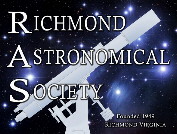Did we have astronomy this year?
Since RAS presents monetary awards to science fair winners, how did this year’s edition work out? As you might expect, this year’s Metro Richmond STEM Fair, was held virtually. But, it still took place. Alas, gone are the crowds of students proudly standing in front of their project presentations. Gone are the judges, grilling the contenders on how they built their creation. Gone is the awards presentation, with hundreds of students cheering on the winners. Gone is the opportunity for RAS to present our award in front of all those students from multiple school districts.
Being a science fair judge for the last 20 years or so, I did not look forward to participating this year. Without the live interaction with students, I anticipated a bust of an experience. But, astronomy must go on. And I ended up enjoying it. The interviews with students took place online, and since both students and judges were able to do this from the comfort of their homes (yes, even the students), it had a much more relaxed atmosphere. The students still engaged, showing their nervousness, perked up when we hit the questions they had prepared for, and showed relief when we wound the interview down. I really did miss seeing their project boards, though. The creativity always showed another side of their personality.
How did astronomy and space science do? Not bad-we had three winners. All were from Godwin High School.
The Effect of Coronal Mass Ejection Acceleration (km/s^2) In Relevance of Earth’s Orbital Position on Gamma Ray Dose Equivalent Rate (nSv/H) in Virginia. Examines the correlation between CME acceleration and the number of gamma rays during a season is proven.
Comparing Exoplanet Detection Techniques Using Various Exoplanet Distances. Data was collected from a NASA Exoplanet Archive and then used to compare the most common exoplanet detection techniques against each other using exoplanet distances.
Using Transit Light Curves for Ground-Truthing the Orbital Radius and Planet Radius of
Exoplanets Examined by the Kepler Space Telescope. The student compared distance results from the Kepler Satellite vs. ground based telescopes, using light curve data.

